Let’s get something out of the way: The best anything “for the money” is relative. Imagine you’ve got a billion dollars - all of a sudden, the best fish finder for the money is probably one of the most expensive models because the cost is totally irrelevant to you.
With that bit of philosophy taken care of, here’s what we’ve opted to do: We’ve selected the best fish finders in a variety of different price ranges, so you’ll be able to buy the perfect fish finder for your budget. In other words, the fish finders we’ve selected have an excellent quality-to-cost ratio - at least, in our humble opinion.
After you’ve browsed through our top picks, we highly recommend reading on if you can’t pick a favorite. We’ll detail the criteria we considered when selecting our favorite fish finders. You can use these same criteria to compare and contrast fish finders and to consider which ones best suit your needs.
That’s the dessert - but for now, let’s get to the meat (fish?) and potatoes. Here are our top fish finders for the money in 2022:
| Garmin Striker 4 GPS Fish Finder | Humminbird PiranhaMAX 4 | Humminbird HELIX 5 | Garmin Striker Vivid 7 | Garmin ECHOMAP Plus 44cv |
|---|---|---|---|---|
Editors Choice
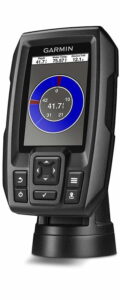 |
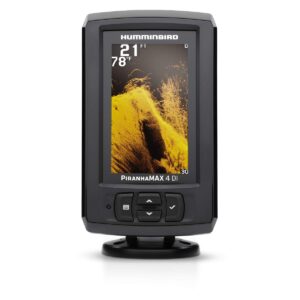 |
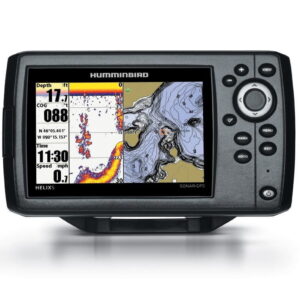 |
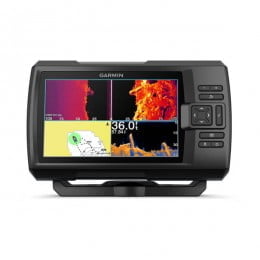 |
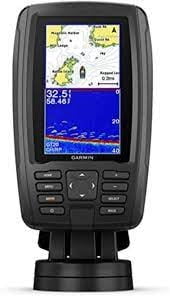 |
| Frequency: 2D Sonar: 200 kHz / 15° and 77 kHz / 45° | Frequency: 200/455 kHz | Frequency: Medium and High CHIRP 75/155 kHz + 130/250 kHz | Frequency: 50/77/200 kHz, CHIRP 83/200 kHz, ClearVu/SideVu 260/455/800 kHz | Frequency: Traditional 77/200 ClearVü CHIRP 455 kHz and 800 kHz |
| Transducer: 77/200 kHz CHIRP | Transducer: XNT 9 28 T | Transducer: XNT 9 SI 180 T | Transducer: GT52HW-TM* | Transducer: GT20-TM |
| Transmit Power: 200 W (RMS) | Transmit Power: N/A | Transmit Power: N/A | Transmit Power: N/A | Transmit Power: N/A |
| Screen: backlit, HVGA color | Screen: TFT with 256 colour range | Screen: N/A | Screen: HD, backlit | Screen: N/A |
| Screen Size: 3.5 | Screen Size: 4.3" | Screen Size: 5 inch | Screen Size: 7” | Screen Size: 4.3-inch |
| Resolution: 480H x 320V | Resolution: 272 x 480 pixels | Resolution: 800x480 | Resolution: 800x480 | Resolution: N/A |
| GPS: Internal, High-precision | GPS: N/A | GPS: Internal, High Precision | GPS: Internal, high precision | GPS: Internal, High Precision |
| Maps Included: Not Available | Maps Included: UniMap | Maps Included: Humminbird Basemap | Maps Included: N/A | Maps Included: Bluechart 3 |
| Max Waypoints: 5,000 | Max Waypoints: N/A | Max Waypoints: 2500 | Max Waypoints: 5,000, 100, 50 (50 000) | Max Waypoints: 5000 |
| Backlit: N/A | Backlit: Yes | Backlit: N/A | Backlit: N/A | Backlit: N/A |
| Imaging: N/A | Imaging: DualBeam, 28 / 16 degrees | Imaging: 350 ft. Down, 250 ft. Side | Imaging: ClearVu 500 ft, SideVu 500 ft (250 ft per side)* | Imaging: N/A |
| Memory Card Slots: N/A | Memory Card Slots: N/A | Memory Card Slots: Micro SD | Memory Card Slots: N/A | Memory Card Slots: Micro SD |
| Best Price (Amazon) Best Price (Bass Pro) | Best Price (Amazon) Best Price (Bass Pro) | Best Price (Amazon) Best Price (Bass Pro) | Best Price (Amazon) Best Price (Bass Pro) | Best Price (Amazon) Best Price (Bass Pro) |
How did Garmin manage to get so many excellent features into a unit this small? We may never learn the answer to that question, but there’s one thing we do know - this unit is one of the best 4” fish finders on the market, with an incredibly low cost to match.
The transducer alone is basically worth the cost of the fish finder; it offers up to 800 kHz CHIRP sonar, as well as down imaging. This thing has incredible target separation and power enough to match the STRIKER 7 (though it lacks its bigger cousin’s side imaging capabilities).
While there are no maps on the STRIKER 4, there is a GPS - and Garmin’s famous Quickdraw Contours tech for creating your own maps. There are lots of incredible features on this unit, and they’re all easy to set up and access, thanks to Garmin’s great user interfaces. This is an excellent low-cost unit, perfect for small vessels.
The PiranhaMAX 4 is one of the least expensive down imaging fish finders on the market. This may be one of the least feature-dense fish finders on our list, but there’s a beauty to its simplicity - and to its incredibly low cost.
There’s a funny thing about this unit: The transducer it comes with is more powerful than the unit supports - that means that while you max out at 455 kHz for down imaging with the unit, the included transducer can offer up to 800 kHz. That means it’s sometimes cheaper to buy a PiranhaMAX 4 than a new transducer - that’s value.
Ease of use, ease of installation, and great down imaging for the cost are the real benefits of the PiranhaMAX 4, and it’s a fish finder we love for smaller vessels.
The HELIX 5 is a truly remarkable unit; it’s by far the most versatile 5” fish finder we’ve seen on the market, and it packs a wallop considering its cost.
What makes it so versatile? It’s a chartplotter/fish finder that offers both down and side imaging - something almost unprecedented at its size and cost. While its imaging capabilities aren’t as powerful as some larger (and pricier) models, it still gives you an incredible look at bottom structure.
Couple that with the features you’ve come to expect from chartplotters, throw in Humminbird’s great maps (including the Basemap that comes with the unit), then factor in the unit’s small size (perfect for smaller vessels), and you’ve got yourself an excellent deal for the price.
The STRIKER 7 is the priciest item on our list of fish finders that give you the best bang for your buck - but it’s worth every penny and then some. This unit has incredible imaging for the price, featuring both down and side imaging. The transducer is excellent, providing you with excellent target separation and a crystal clear view of what’s going on under the water.
Garmin always offers incredible user interfaces, and the STRIKER 7 is no exception. Easy-to-use, jam-packed with features, and boasting a large 7” display, this is one of the best fish finders you can get at its price point.
How did Garmin manage to get so many excellent features into a unit this small? We may never learn the answer to that question, but there’s one thing we do know - this unit is one of the best 4” fish finders on the market, with an incredibly low cost to match.
The transducer alone is basically worth the cost of the fish finder; it offers up to 800 kHz CHIRP sonar, as well as down imaging. This thing has incredible target separation and power enough to match the STRIKER 7 (though it lacks its bigger cousin’s side imaging capabilities).
While there are no maps on the STRIKER 4, there is a GPS - and Garmin’s famous Quickdraw Contours tech for creating your own maps. There are lots of incredible features on this unit, and they’re all easy to set up and access, thanks to Garmin’s great user interfaces. This is an excellent low-cost unit, perfect for small vessels.
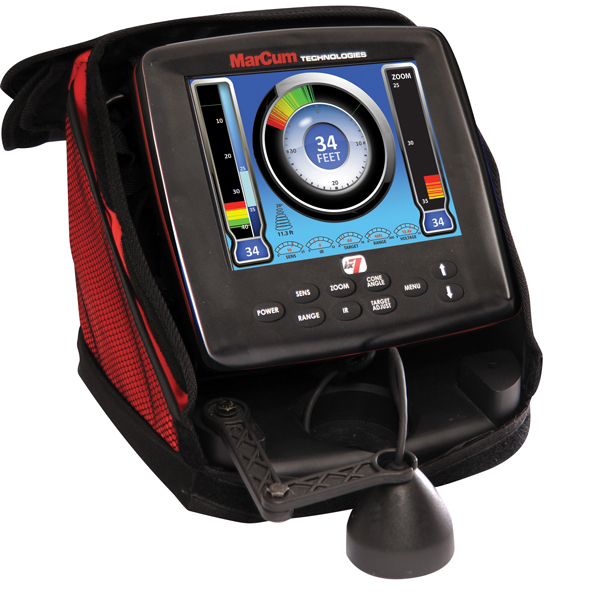
You’ve seen our top picks - but how did we choose such great fish finders? And, more importantly, which one should you choose?
Fish finders all have a suite of unique features and designs, but they all share a number of core traits. These traits are simple to compare, and they’re what we considered when making our list. Understanding these traits - and the trade-offs you sometimes have to make between them - will help you choose the right fish finder for you.
You can have the best transducer on the planet with sonar that could make dolphins jealous - but it doesn’t mean a thing if you can’t see the results displayed on that beautiful scrolling sonar chart.
That’s why we value a unit’s display very highly. Big screens are worth the money in our books, and we’ll almost never recommend a fish finder without an HD display. Even our budget recommendations usually have excellent screens!
High resolution means better target separation and identification and easier-to-read, clearer charts and imaging. These traits make your fish finder more accurate - and that makes your fishing more accurate.
Large screens provide better viewing angles, so they can be used by multiple anglers simultaneously or from many different spots on your boat. They’re also easier to read at a glance and provide a better experience when using a split-screen.
We don’t value interface as highly as display - a bad interface is often annoying but rarely impacts the quality of your catches. That’s not to say a unit’s interface is unimportant, however.
We give points to devices with touchscreen + keypad/joystick interfaces. Touchscreens alone can be difficult to use when wet. We also give points to devices that have easy-to-use home screens and menus, and to devices that are easy to set up.
Without a great display, your transducer is just screaming into the void. Without a great transducer, your fish finder is little more than a glorified GPS (at best) or a very bad version of a Game & Watch handheld game (at worst).
Here’s what we value in transducers:
We also give points to fish finders that support a wide range of frequencies. To us, the transducer the fish finder comes with is very important when determining its overall value.
Remember: Higher frequencies offer clearer sonar charts and imaging at the cost of range and depth. If you’re fishing in deep water, low frequencies are an absolute must. On the flipside, if you want great imaging, high frequencies are a must. Many anglers fish in both deep and shallow water, which is why we value fish finders that support many frequencies.
We’re quite fond of imaging - fish finders with it score higher, but only after a certain price range. That’s because imaging is spectacular when it comes to scouting for great fishing spots, but it’s not strictly necessary. Most anglers, after all, choose to use sonar charts when they’re actively fishing.
Imaging is also at its best when screens are large, both because large screens make images easier to see and because large screens offer better split-screen functionality. Pairing down and side imaging with sonar charts in a single view can make for a particularly fruitful fishing trip.
Down imaging tends to be more affordable than side imaging - where possible, our top picks contain both. If you care a bit less about scouting for the best possible fishing spots (which can be the case if you know a lake very well), or if you already have a unit with imaging capabilities, you might not value imaging as highly.
How you’ll mount your fish finder and transducer depends largely on the configuration you already have in your boat. Most of the fish finders on our list come with a gimbal mount. This mount is relatively easy to set up almost anywhere in your boat.
For transducers, we’re quite partial to transom mounting. It’s usually the easiest way to mount a transducer, and there are plenty of tips and tricks you can find to mount transducers on transom boards to avoid having to drill too many holes in your boat.
If you don’t have a fish finder with mapping and charting capabilities, we highly encourage you to purchase one. There’s a lot to be said for having a GPS and maps on your fish finder - the two together do much more than the two apart ever could.
You can, for example:
We could go on for ages about the benefits of mapping and charting - and indeed, we do, in many of our more in-depth reviews. Note that mapping isn’t a feature you need on all of your fish finders if you’re using multiple units per vessel. You should have at least one unit with maps, though, unless you’re doing all of your fishing on shore.Maps can help you keep your boat safe and find the best fishing spots. We give a lot of points for chartplotting functionality.
Some people value a degree of portability in their fish finders. Realistically, however, fish finders aren’t the most portable devices on the planet. The transducer needs to be mounted, so unless you’re very partial to drilling holes, it’s going to be stuck in place.
Apart from the transducer, most fish finders have the same level of “portability” - units pretty much always weigh under 10 pounds. The only real exceptions to this rule are handheld units and castables.
With handheld units and castables, you can fish from anywhere, and you can easily move your fish finder from one boat to another. We didn’t give any extra points for portability here, but we do have a guide to portable fish finders that you can check out if that’s what you’re in the market for.
Why don’t we value portability highly? To be blunt, it’s because fish finders with mounted transducers usually perform better and offer more features.
In some ways, price was the most important factor in our evaluations, seeing as we compared each fish finder to the others in its price range. Price is almost certainly one of the most important factors in your mind, too.
We can’t talk about price without talking about value. Imagine you need both a fish finder and a GPS - instead of buying a low-cost fish finder and a low-cost GPS, you’re almost certainly better off buying a higher-quality fish finder/chartplotter. You’ll save room on your boat, you’ll have fewer pieces of tech to manage, and you’ll end up with a higher quality, longer-lasting unit.
While we’ve grouped together items at similar price points, we sometimes opted to choose a fish finder that was slightly more expensive than its competitors as the best at that price point. We did this anytime the features or transducer provided by the more expensive fish finder outweighed the cost.
We, of course, didn’t account for your fishing preferences when we made our list - but you should. We love imaging, but we know anglers who could do without it. We value transducers and fish finders that offer multiple frequencies because they’re a great choice for anglers of all kinds - but some anglers only fish in shallow water.
You get the idea - your preferences matter a lot. If you’re only fishing in small boats, you’ll want a small fish finder. If you’re only fishing in deep water, you’ll want a low-frequency transducer. If you’ve already got a large transducer with down and side imaging, you might want a smaller one for another part of your boat.
When looking at any list of the best fish finders, including this one, it’s a good idea to keep your own fishing habits and preferences in mind. There’s no one-size-fits-all solution - but we hope our list of criteria has helped you get the gears of your mind turning!
We generally prefer fish finders from three different brands: Lowrance, Humminbird, and Garmin (in no particular order). They’ve been making fish finders for decades, and we can count on them for great customer service, high-quality devices, and cutting-edge innovations.
When we’re talking about ice fish finders, we’d include Vexillar, and there are a few great portable fish finder brands out there - but by and large, we stick to the big three, and we think you should too.
Of course, if you know a dark horse brand that isn’t being talked about, and they make your favorite fish finders, far be it from us to tell you not to buy their products. In fact, if you know a dark horse brand no one is talking about, please tell us! We love reviewing fish finders.
We think you’ll really like the fish finders we’ve put together in this list - and you’ll definitely find something at your price point. The “best” is always subjective, but we’ve put countless hours of research into our list and reviews - and we think our list is as good as they come.
How do you figure out which of the fish finders we’ve picked is best for you? How do you know there isn’t another fish finder at a similar price point you’d prefer? We encourage you to read our in-depth reviews, as well as the criteria we listed above. With those tools in hand, you’ll be able to choose the perfect fish finder for your needs.
Happy fishing!